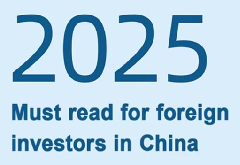Decree of State Food and Drug Administration
Chapter V Supplementary Provisions
Article 38 For the purpose of the Provisions, importer includes distribution enterprises, the consignee and the applicant for testing.
The distribution enterprise refers to enterprise or entity within China that has signed and performed import and export trade contracts with foreign counterparts.
The consignee refers to the consignee or the owner of the goods as specified in the purchase contract and the shipping invoice.
The applicant for testing refers to the actual owner or the domestic distributor of that batch of imported drugs who is specifically responsible for going through the formalities of importation record filing and port testing.
The consignee and the applicant for testing may be the same.
Article 39 Drugs entering bonded warehouses, bonded zones and export processing zones from abroad shall be exempted from importation record filing and port testing, and shall be supervised by the customs in accordance with relevant regulations. Drugs entering China from bonded warehouses, export supervised warehouses, bonded zones or export processing zones shall go through the formalities for importation record filing and port testing in accordance with the relevant regulations of the Provisions.
The drug substances and crude drugs that have been approved for importation through processing trade shall be exempted from importation record filing and port testing, while such drug substances and the resulting finished products made from that shall be prohibited for domestic sale. If they are indeed unable to be exported due to special circumstances, they shall be handed over to and disposed of by the local drug regulatory department in accordance with relevant regulations, and shall be written off by the customs after verification.
Small amount of drugs for personal use carried by individuals entering or leaving the territory of China shall be limited to reasonable quantities for personal use and shall be subject to the supervision of the customs.
Article 40 To import drug substances which have been imported but have not yet been included in the list of imported drugs for the time being, the importer shall go through the formalities of importation record filing with the drug regulatory department at ports of entry in accordance with the regulations of the Provisions.
Article 41 Measures governing the importation record filing and port testing of crude drugs shall be separately formulated by the State Food and Drug Administration.
Article 42 To import narcotic drugs and psychotropic substances, the importer shall, on the premise of obtaining the Import Drug License (or the Pharmaceutical Product License), apply for the Import License in accordance with the relevant regulations on the administration of narcotic drugs and psychotropic substances as specified by the State Council.
Article 43 The narcotic drugs and psychotropic substances as specified in the Provisions refer to the varieties of drugs for clinical use. The importation of narcotic drugs and psychotropic substances for scientific research, teaching and veterinary use shall follow the relevant regulations on the administration of narcotic drugs and psychotropic substances formulated by the State Council.
Article 44 The Provisions shall be interpreted by the State Food and Drug Administration and the General Administration of Customs.
Article 45 The Provisions shall come into force as of January 1, 2004. The Administrative Measures for the Import of Drugs, which came into effect on May 1, 1999, shall be repealed simultaneously.
Rules for Import Drugs Sampling
I. These Regulations are formulated to make sure the sampling management of drugs to be imported is well performed, guarantee the representativeness and scientificness of sampling for port testing and ensure the accuracy of testing results.
II. Sampling of drugs to be imported shall be carried out by the drug control institute of port which undertakes the testing for that variety of drugs. The applicant for testing shall be responsible for the preparation of the tools and sites necessary for sampling, as well as the matters such as to move, stack, open and restore packaging during sampling.
III. The drugs imported under the same contract may be sampled as the same batch only if the drug name, country of manufacture, manufacturer, package, batch number, dosage form, strength, shipping mark and contract number are identical. If drugs are imported under the same contract but shipped in different batches, they shall be sampled in different batches.
IV. In the case of taking samples of imported pharmaceutical preparations which will be sub-packaged in China, the importer shall provide the Import Drug License for the drugs in the original large package and the approval documents of sub-packaging for imported drugs, and samples shall be taken as per the strength and quantity after sub-packaging and in accordance with the sampling rules of corresponding preparations.
V. Sampling Quantity
Except for special regulations and requirements, the quantity of drug samples required for sampling generally shall be three times of the quantity required for testing. The remaining samples after testing, except for the retained samples for future reference, shall be returned to the applicant for testing.
VI. Sampling Method
(I) Drug substances
1. If the products within one package are at least 10 kg
If the quantity is less than 10, take 1 product for sampling; if the quantity is 11 to 50, take additional 1 product for sampling for every additional 10, and the odd less than 10 shall be counted as 10; if the quantity is 51 to 100, take additional 1 product for sampling for every additional 20, and the odd less than 20 shall be counted as 20; if the quantity is more than 101, take additional 1 product for sampling for every additional 50, and the odd less than 50 shall be counted as 50; if the quantity is more than 1001, take additional 1 product for sampling for every additional 100, and the odd less than 100 shall be counted as 100;
2. If the products within one package are 5 kg (including) to 10 kg, take 1 product for sampling for every 100 kg, and the odd less than 100 kg shall be counted as 100 kg;
3. If the products within one package are 1 (including) to 5 kg, take 1 product for sampling for every 50 kg, and the odd less than 50 kg shall be counted as 50 kg;
4. If the products within one package are less than 1 kg, take 1 product for sampling for every 20 kg, and the odd less than 20 kg shall be counted as 20 kg (taking samples from original package).
(II) Injections
1. Small volume injections
If the quantity is below 20,000 vials (including), take 1 product for sampling; if the quantity is below 50,000 vials (including), take 2 products for sampling; if the quantity is below 100,000 vials (including), take 3 products for sampling; if the quantity is more than 100,000 vials, take additional 1 product for sampling for every additional 100,000 vials, and the odd less than 100,000 shall be counted as 100,000.
2. Large volume injections
If the injection is 100 ml to 1000 ml (including), take 1 product for sampling for every 10,000 vials, and the odd less than 10,000 vials shall be counted as 10,000. If the injection (including dialysate) is more than 1000 ml, take 1 product for sampling for every 5,000 vials (bags), and the odd less than 5,000 vials (bags)shall be counted as 5,000.
(III) Other preparations
Take 1 product for sampling for every 20,000 boxes (vials), and the odd less than 20,000 boxes (vials) shall be counted as 20,000.
VII. Sampling Requirements
(I) Before unsealing the sample, the outer package, shipping mark number or contract number, and name and quantity of the product shall be checked against the materials submitted for testing. After unsealing, the name of drug, the name of factory and the batch number of the drugs in the sub-package shall be checked, and whether the package is intact and clean without water stain, mildew or other material pollution shall be determined. If the drugs within part of the packages deteriorate, samples shall be taken for testing separately.
(II) After unsealing the package of drug substances, samples shall be taken at different parts to make the total amount reach the sampling quantity, and then directly pour them into the sample bottle and mix well.
(III) After sampling, the opened package shall be sealed, and the quantity and date of sampling shall be indicated on the package.
VIII. Notes for Sampling
(I) The sampling environment shall be clean and hygienic, and the sampling tools must be clean and dry, up to the requirements for the drugs to be sampled.
When taking samples, the drugs shall be prevented from deterioration due to pollution, moisture absorption, weathering or oxidation. Samples taken for testing shall be promptly placed in sealed containers (plastic bags, cans or ground-glass flask).
(III) Shake the liquid sample well before sampling. Crystals contained shall be dissolved and extracted without affecting the quality.
(IV) For toxic, corrosive and explosive drugs, appropriate protective measures shall be taken during sampling. Handle with care without vibration during sampling, and mark "dangerous goods" on the outside of the sample bottle.
(V) Avoid taking samples with metallic sampling tools for corrosive drugs.
(VI) Light sensitive drugs shall be sampled in a dark place protected from light, and the samples shall be placed in colored bottles and when necessary covered with black paper.
(VII) If sterility test, pyrogen test, microbial limit test or vacuum supply or nitrogen filling is required for drug substances, then samples shall be taken according to sterility operation or special requirements.
(VIII) Sampling shall be carried out by two or more professionals who have received special training, and the relevant personnel of the entity of which products are sampled must be present.
(IX) When it is necessary to appropriately change the sampling method and quantity based on the quality and packing abnormalities of the goods arriving at port, the drug control institute of port shall, communicate with the applicant for testing, and seek agreement on the sampling method so as to take representative samples. Any change in the sampling method shall be recorded in the Record of Sampling for Import Drugs.
Note: In case of any difference in interpretation between the English version and the Chinese version, the Chinese version shall prevail.



